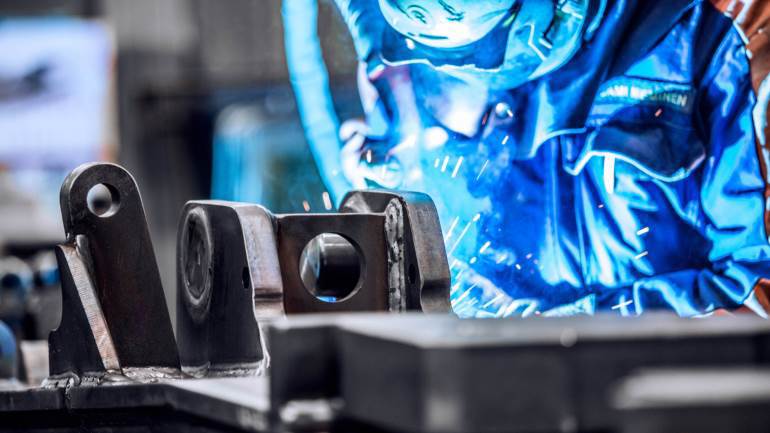

|
Edward Lowton
Editor |


|
| Home> | Production Engineering | >Welding | >Technology designed for manual steel welding |
Technology designed for manual steel welding
16 June 2019
Designed for manual steel welding, the Fronius TPS/i Steel Edition is a new version of the company's power source platform.

The Steel Edition has been optimised for manual steel welding and is said to feature an attractive price/performance ratio. Users benefit from different characteristics for standard and pulse welding, as well as a WPS package containing welding procedure specifications that are certified in accordance with DIN EN 1090.
The TPS/i Steel Edition is based on the current TPS/i power source platform. The welding systems have a modular design, can be adapted to individual requirements, and have impressive networkability and comprehensive communication functions.
Their powerful processors enable them to analyse and control welding processes with extreme precision. This ensures optimum results for a variety of welding tasks.
The Steel Edition has been specially designed for manual steel welding. It has a variety of steel characteristics for both standard and pulsed arcs. Users are therefore able to carry out welding tasks on steel workpieces from a material thickness of 1mm and above.
A highlight of the new Steel Edition is the PCS (Pulse Controlled Spray Arc) characteristic: This is said to provide a particular advantage in the intermediate arc range – the smooth transition from a pulsed to a spray arc creates less welding spatter, which in turn reduces the amount of rework required. In addition, this characteristic features a focused arc that guarantees a deep penetration profile. It is particularly suited to small gaps, fillet welds, and root passes.
Welding procedure specifications for standards-compliant work
The WPS package in the TPS/i Steel Edition contains welding procedure specifications for different steel grades, material thicknesses, and filler metals. It eliminates the time-consuming and costly process of creating welding procedure specifications. This is particularly beneficial for companies that are required to comply with the European standard DIN EN 1090. Manufacturers of load-bearing steel constructions, for example, are obliged to use the specifications contained in the WPS package by the European standard.
In order to document the process and prove that the weld seams have been created in accordance with the certified welding procedure specifications, the TPS/i Steel Edition is also equipped with the WeldCube Light data recording and analysis system. The TPS/i records a wealth of information for each weld seam, such as time and duration and average values for current, voltage, wire speed, and power, and saves them in the internal TPS/i data memory. Users can view the data using the TPS/i SmartManager and export it as a PDF. This makes it easy to document all weld seams. Users can upgrade to even more comprehensive data management functions at any time with WeldCube Basic or WeldCube Premium.
Power categories and accessories
The TPS/i Steel Edition is available in various power categories, ranging from 270 to 600A. Numerous features ensure ease of use, such as a clear touch display that makes for simple and intuitive operation. The system can also be equipped with the Fronius JobMaster welding torch. The torch displays the most important welding parameters on its handle and allows the user to adjust the settings on the handle itself. In addition, user management with cards or key fobs allows individual authorisations to be created, thus reducing errors caused by improper operation.
The Steel Edition can also be combined with the K4 fume extraction torch, which removes welding fumes at the point of origin. An optional dust filter makes it easier to use the welding system under harsh environmental conditions. The filter protects the system by preventing contaminants that hinder the function of the machine from entering the housing.

















